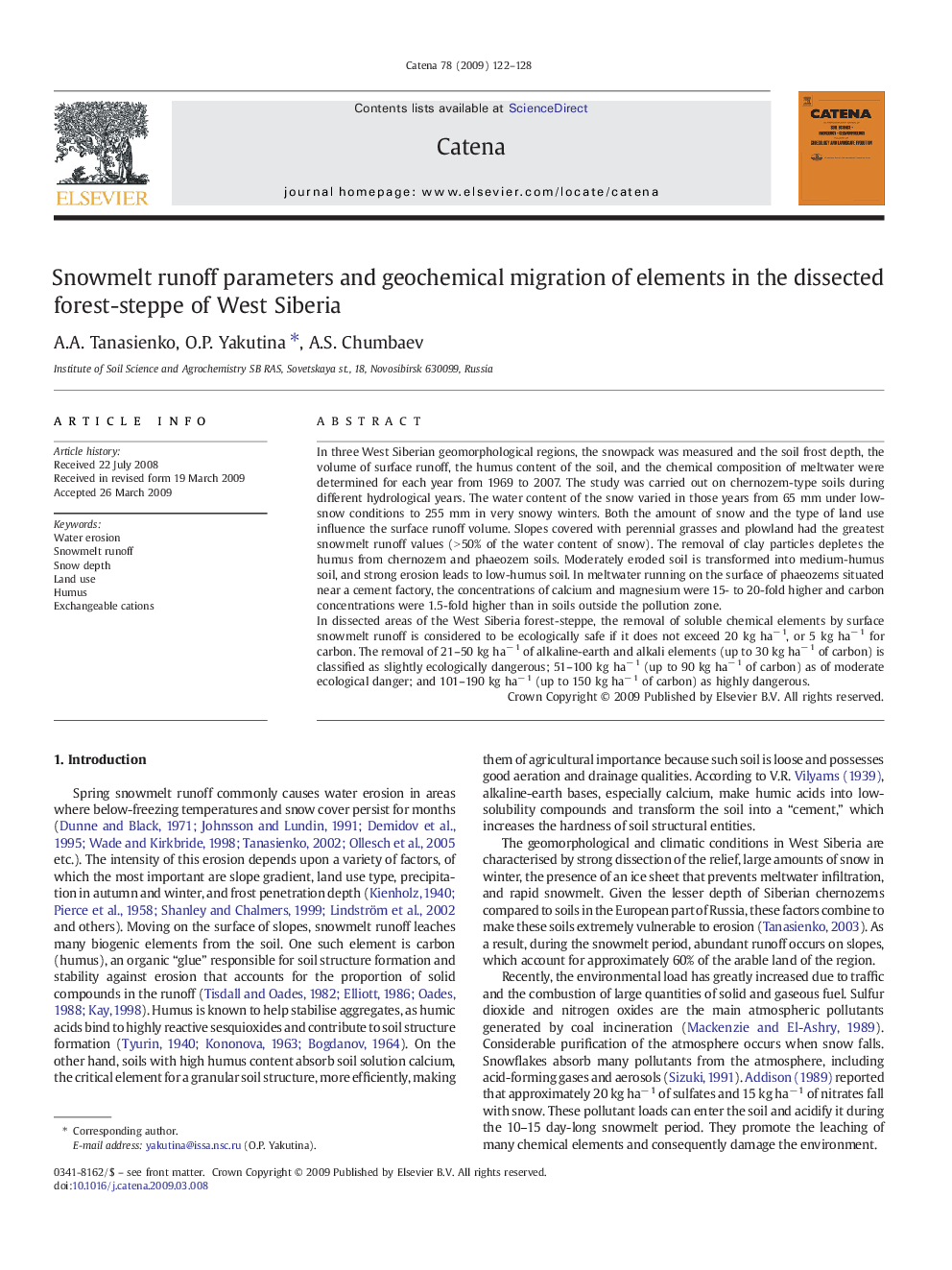| کد مقاله | کد نشریه | سال انتشار | مقاله انگلیسی | نسخه تمام متن |
|---|---|---|---|---|
| 4572202 | 1332159 | 2009 | 7 صفحه PDF | دانلود رایگان |

In three West Siberian geomorphological regions, the snowpack was measured and the soil frost depth, the volume of surface runoff, the humus content of the soil, and the chemical composition of meltwater were determined for each year from 1969 to 2007. The study was carried out on chernozem-type soils during different hydrological years. The water content of the snow varied in those years from 65 mm under low-snow conditions to 255 mm in very snowy winters. Both the amount of snow and the type of land use influence the surface runoff volume. Slopes covered with perennial grasses and plowland had the greatest snowmelt runoff values (> 50% of the water content of snow). The removal of clay particles depletes the humus from chernozem and phaeozem soils. Moderately eroded soil is transformed into medium-humus soil, and strong erosion leads to low-humus soil. In meltwater running on the surface of phaeozems situated near a cement factory, the concentrations of calcium and magnesium were 15- to 20-fold higher and carbon concentrations were 1.5-fold higher than in soils outside the pollution zone.In dissected areas of the West Siberia forest-steppe, the removal of soluble chemical elements by surface snowmelt runoff is considered to be ecologically safe if it does not exceed 20 kg ha− 1, or 5 kg ha− 1 for carbon. The removal of 21–50 kg ha− 1 of alkaline-earth and alkali elements (up to 30 kg ha− 1 of carbon) is classified as slightly ecologically dangerous; 51–100 kg ha− 1 (up to 90 kg ha− 1 of carbon) as of moderate ecological danger; and 101–190 kg ha− 1 (up to 150 kg ha− 1 of carbon) as highly dangerous.
Journal: CATENA - Volume 78, Issue 2, 15 August 2009, Pages 122–128